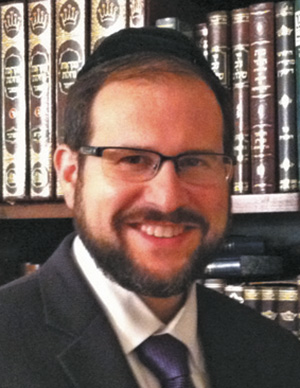
In my youth, before I owned any sefarim I loved siddurim and machzorim and was always excited by new ones. This was especially true as Artscroll published its machzorim. (Today, we can hardly remember what the world was like before Artscroll, but it was only a few decades ago when Artscroll was an incredible novelty.)
The Artscroll Pesach machzor was published just prior to Pesach 1990, when I was in fifth grade. As my birthday is two days before Pesach, when my Aunt Miriam asked me what I wanted for my birthday that year, I immediately replied that I wanted the newly published machzor.
It was Chol Hamoed before we had the chance to go to Tuvia’s (then the only Judaica store in Monsey). By then, the regular machzor was sold out. The only thing in stock was the leather-bound machzor, which was double the price. Aunt Miriam saw how badly I wanted it, and agreed to buy it for me for the combination of my birthday, afikoman and the following Chanukah. I readily agreed.
I hardly put down the machzor the entire rest of Pesach. I took it with me on every Chol Hamoed trip, and would’ve taken it out of the car had my parents not insisted I leave it there.
It’s now almost 30 years later, but every time I take out that machzor, I remember the gift from Aunt Mim and Uncle Yaakov. The machzor doesn’t look anywhere as aesthetically beautiful as it did back then, but it has a much deeper and more profound beauty for me in what it represents.
There is a well-known thought from Rav Levi Yitzchak of Berditchev about why we refer to the holiday as Pesach while the Torah refers to it as Chag Hamatzot. Rav Levi Yitzchok explains that we refer to it as Pesach to remind ourselves of the love Hashem felt for us when He passed over our homes on the night of the Exodus. Hashem refers to it as Chag Hamatzot as a reminder of the love and uncompromised faith we demonstrated when we left Egypt into the vast desert with our families.
Often after the Sedarim are over we feel that the highlight of Pesach is over, and now we just have to coast through the remaining days before we can return to our regular diet. The truth, however, is that for another six days we are celebrating Chag Hamatzot and partaking of matzah, arousing and reminding ourselves of the eternal love story that was ignited at the time of the Exodus. Every time we hold up a piece of matzah we are holding a symbolic reminder of our unbreakable and unshakeable bond with Hashem.
The seventh day of Pesach is itself an incredible celebration, and according to many commentaries is even greater than the first day of Pesach. When we crossed the sea and our former oppressors were obliterated, it was a testament to Hashem’s love for us. Until that point, the nation may have wondered if the miracles they had witnessed in Egypt was more to punish the Egyptians. But the unbridled revelation at the sea was an unquestionable expression of Hashem’s love for His nation.
Megillat Shir Hashirim is read specifically on Pesach because it is the deepest expression of the intimate love between Hashem and klal Yisrael. It is truly a week-long matzah celebration.
Last year, toward the end of Chol Hamoed, we were asking our (then) 3-year-old son Dovid what he wanted for lunch. He finally agreed to have pizza. When Chani mentioned that she would get matzah to make him pizza, he started yelling, “No more matzah! I don’t want any more matzah! I want real pizza!”
Perhaps the taste of the matzah doesn’t excite us much by the time the holiday is over. But the deep symbolism of what it represents should excite us throughout the beautiful Yom Tov and beyond. To paraphrase Maxwell House, “Good to the last bite!”
Rabbi Dani Staum, LMSW, is the rabbi of Kehillat New Hempstead as well as a rebbe and guidance counselor at Heichal HaTorah in Teaneck, New Jersey, principal at Mesivta Ohr Naftoli of New Windsor and a division head at Camp Dora Golding. He can be reached at stamtorah@gmail.com.
By Rabbi Dani Staum
Looking for “Instant Inspiration” on the parsha in under five minutes? Follow him on Torahanytime.com.











